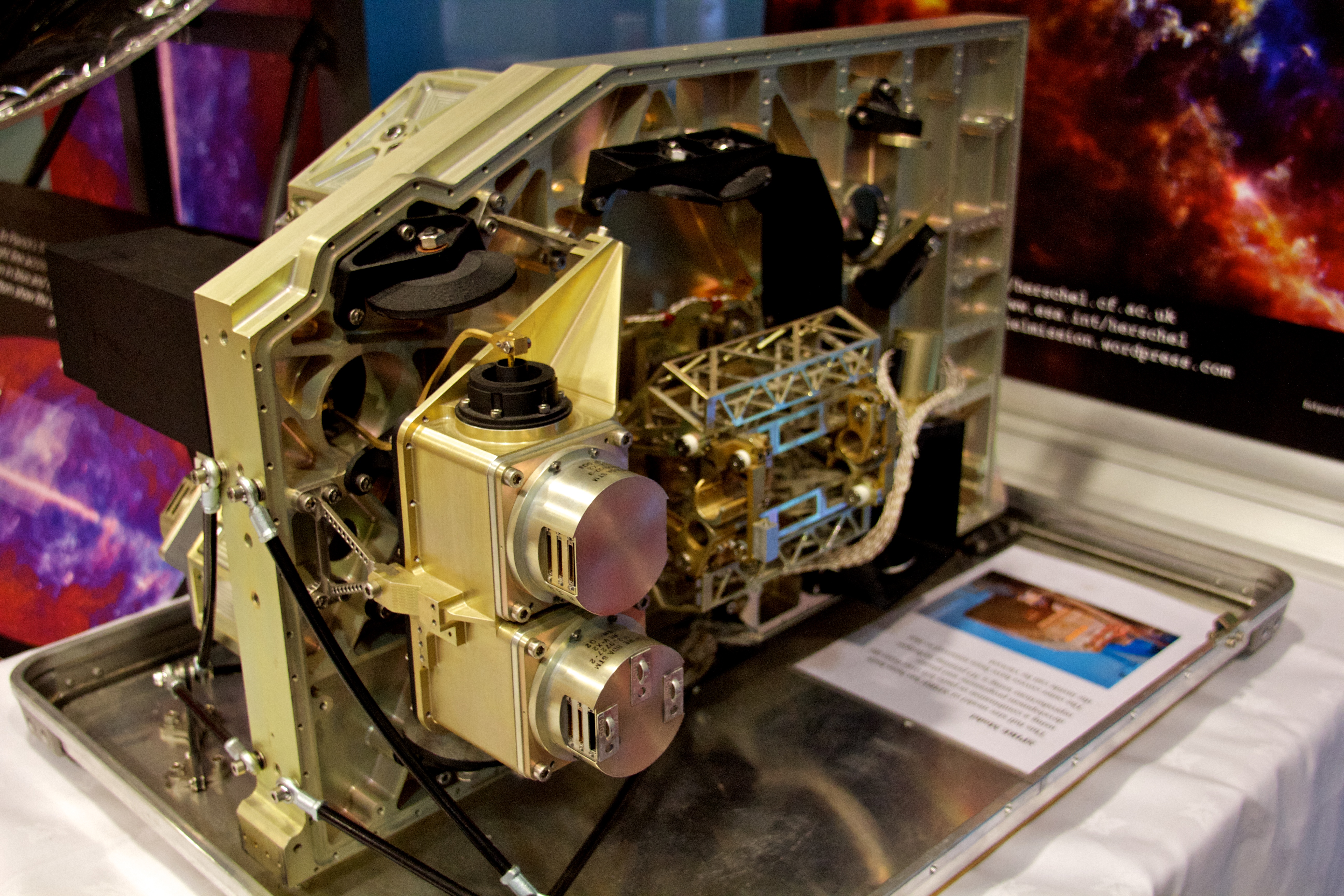|
R Crateris
R Crateris is a star about 700 light years from the Earth in the constellation Crater. It is a semiregular variable star, ranging in brightness from magnitude 8.1 to 9.5 over a period of about 160 days. It is not visible to the naked-eye, but can be seen with a small telescope, or binoculars. R Crateris is a double star; the variable star and its magnitude 9.9 F8V companion are separated by 65.4 arcseconds. Although the period for large brightness changes in R Crateris is listed as ~160 days, in 1982 Silvia Livi and Thaisa Bergmann reported small (~0.1 magnitude) variations on timescales of less than one hour. The rapid variations seem to be more regular when the star is near maximum brightness. R Crateris is an oxygen-rich asymptotic giant branch star, losing mass at a rate of per year via a stellar wind. At large distances from the star, the wind is expanding into space at km/sec. Near-infrared radiation from R Crateris was detected in the first Two-Micron Sky ... [...More Info...] [...Related Items...] OR: [Wikipedia] [Google] [Baidu] |
Double Star
In observational astronomy, a double star or visual double is a pair of stars that appear close to each other as viewed from Earth, especially with the aid of optical telescopes. This occurs because the pair either forms a binary star (i.e. a binary system of stars in mutual orbit, gravitationally bound to each other) or is an ''optical double'', a chance line-of-sight alignment of two stars at different distances from the observer. Binary stars are important to stellar astronomers as knowledge of their motions allows direct calculation of stellar mass and other stellar parameters. The only (possible) case of "binary star" whose two components are separately visible to the naked eye is the case of Mizar and Alcor (though actually a multiple-star system), but it is not known for sure whether Mizar and Alcor are gravitationally bound. Since the beginning of the 1780s, both professional and amateur double star observers have telescopically measured the distances and angles between d ... [...More Info...] [...Related Items...] OR: [Wikipedia] [Google] [Baidu] |
Hydroxyl Radical
The hydroxyl radical is the diatomic molecule . The hydroxyl radical is very stable as a dilute gas, but it decays very rapidly in the condensed phase. It is pervasive in some situations. Most notably the hydroxyl radicals are produced from the decomposition of hydroperoxides (ROOH) or, in atmospheric chemistry, by the reaction of excited atomic oxygen with water. It is also important in the field of radiation chemistry, since it leads to the formation of hydrogen peroxide and oxygen, which can enhance corrosion and SCC in coolant systems subjected to radioactive environments. In organic synthesis, hydroxyl radicals are most commonly generated by photolysis of 1-hydroxy-2(1''H'')-pyridinethione. Notation The unpaired electron of the hydroxyl radical is officially represented by a middle dot, •, beside the O. Biology Hydroxyl radicals can occasionally be produced as a byproduct of immune action. Macrophages and microglia most frequently generate this compound when exp ... [...More Info...] [...Related Items...] OR: [Wikipedia] [Google] [Baidu] |
Maser
A maser (, an acronym for microwave amplification by stimulated emission of radiation) is a device that produces coherent electromagnetic waves through amplification by stimulated emission. The first maser was built by Charles H. Townes, James P. Gordon, and Herbert J. Zeiger at Columbia University in 1953. Townes, Nikolay Basov and Alexander Prokhorov were awarded the 1964 Nobel Prize in Physics for theoretical work leading to the maser. Masers are also used as the timekeeping device in atomic clocks, and as extremely low-noise microwave amplifiers in radio telescopes and deep-space spacecraft communication ground stations. Modern masers can be designed to generate electromagnetic waves at not only microwave frequencies but also radio and infrared frequencies. For this reason, Townes suggested replacing ''microwave'' with the word ''molecular'' as the first word in the acronym ''maser''. The laser works by the same principle as the maser but produces higher frequency ... [...More Info...] [...Related Items...] OR: [Wikipedia] [Google] [Baidu] |
Interstellar Medium
In astronomy, the interstellar medium is the matter and radiation that exist in the space between the star systems in a galaxy. This matter includes gas in ionic, atomic, and molecular form, as well as dust and cosmic rays. It fills interstellar space and blends smoothly into the surrounding intergalactic space. The energy that occupies the same volume, in the form of electromagnetic radiation, is the interstellar radiation field. The interstellar medium is composed of multiple phases distinguished by whether matter is ionic, atomic, or molecular, and the temperature and density of the matter. The interstellar medium is composed, primarily, of hydrogen, followed by helium with trace amounts of carbon, oxygen, and nitrogen. The thermal pressures of these phases are in rough equilibrium with one another. Magnetic fields and turbulent motions also provide pressure in the ISM, and are typically more important, dynamically, than the thermal pressure is. In the interstellar medium, ... [...More Info...] [...Related Items...] OR: [Wikipedia] [Google] [Baidu] |
Bowshock
In astrophysics, a bow shock occurs when the magnetosphere of an astrophysical object interacts with the nearby flowing ambient plasma such as the solar wind. For Earth and other magnetized planets, it is the boundary at which the speed of the stellar wind abruptly drops as a result of its approach to the magnetopause. For stars, this boundary is typically the edge of the astrosphere, where the stellar wind meets the interstellar medium. Description The defining criterion of a shock wave is that the bulk velocity of the plasma drops from "supersonic" to "subsonic", where the speed of sound cs is defined by c_s^2 = \gamma p/ \rho where \gamma is the ratio of specific heats, p is the pressure, and \rho is the density of the plasma. A common complication in astrophysics is the presence of a magnetic field. For instance, the charged particles making up the solar wind follow spiral paths along magnetic field lines. The velocity of each particle as it gyrates around a ... [...More Info...] [...Related Items...] OR: [Wikipedia] [Google] [Baidu] |
Herschel Space Observatory
The Herschel Space Observatory was a space observatory built and operated by the European Space Agency (ESA). It was active from 2009 to 2013, and was the largest infrared telescope ever launched until the launch of the James Webb Space Telescope in 2021. Herschel carries a mirror and instruments sensitive to the far infrared and submillimetre wavebands (55–672 µm). Herschel was the fourth and final cornerstone mission in the Horizon 2000 programme, following ''SOHO''/'' Cluster II'', ''XMM-Newton'' and ''Rosetta''. The observatory was carried into orbit by an Ariane 5 in May 2009, reaching the second Lagrangian point (L2) of the Earth–Sun system, from Earth, about two months later. Herschel is named after Sir William Herschel, the discoverer of the infrared spectrum and planet Uranus, and his sister and collaborator Caroline Herschel. The observatory was capable of seeing the coldest and dustiest objects in space; for example, cool cocoons where stars form and ... [...More Info...] [...Related Items...] OR: [Wikipedia] [Google] [Baidu] |
Cosmic Dust
Cosmic dust, also called extraterrestrial dust, star dust or space dust, is dust which exists in outer space, or has fallen on Earth. Most cosmic dust particles measure between a few molecules and 0.1 mm (100 micrometers). Larger particles are called meteoroids. Cosmic dust can be further distinguished by its astronomical location: intergalactic dust, interstellar dust, interplanetary dust (such as in the zodiacal cloud) and circumplanetary dust (such as in a planetary ring). There are several methods to obtain space dust measurement. In the Solar System, interplanetary dust causes the zodiacal light. Solar System dust includes comet dust, asteroidal dust, dust from the Kuiper belt, and interstellar dust passing through the Solar System. Thousands of tons of cosmic dust are estimated to reach the Earth's surface every year, [...More Info...] [...Related Items...] OR: [Wikipedia] [Google] [Baidu] |
IRAS
The Infrared Astronomical Satellite (Dutch: ''Infrarood Astronomische Satelliet'') (IRAS) was the first space telescope to perform a survey of the entire night sky at infrared wavelengths. Launched on 25 January 1983, its mission lasted ten months. The telescope was a joint project of the United States (NASA), the Netherlands ( NIVR), and the United Kingdom ( SERC). Over 250,000 infrared sources were observed at 12, 25, 60, and 100 micrometer wavelengths. Support for the processing and analysis of data from IRAS was contributed from the Infrared Processing and Analysis Center at the California Institute of Technology. Currently, the Infrared Science Archive at IPAC holds the IRAS archive. The success of IRAS led to interest in the 1985 Infrared Telescope (IRT) mission on the Space Shuttle, and the planned Shuttle Infrared Telescope Facility which eventually transformed into the Space Infrared Telescope Facility, SIRTF, which in turn was developed into the Spitzer Space ... [...More Info...] [...Related Items...] OR: [Wikipedia] [Google] [Baidu] |
Infrared
Infrared (IR), sometimes called infrared light, is electromagnetic radiation (EMR) with wavelengths longer than those of visible light. It is therefore invisible to the human eye. IR is generally understood to encompass wavelengths from around 1 millimeter (300 GHz) to the nominal red edge of the visible spectrum, around 700 nanometers (430 THz). Longer IR wavelengths (30 μm-100 μm) are sometimes included as part of the terahertz radiation range. Almost all black-body radiation from objects near room temperature is at infrared wavelengths. As a form of electromagnetic radiation, IR propagates energy and momentum, exerts radiation pressure, and has properties corresponding to both those of a wave and of a particle, the photon. It was long known that fires emit invisible heat; in 1681 the pioneering experimenter Edme Mariotte showed that glass, though transparent to sunlight, obstructed radiant heat. In 1800 the astronomer Sir William Herschel discovered ... [...More Info...] [...Related Items...] OR: [Wikipedia] [Google] [Baidu] |








